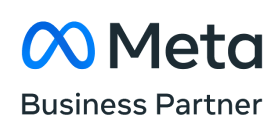Introduction
In the ever-evolving landscape of digital marketing and SEO, staying ahead of the curve is crucial. One of the latest advancements to be aware of is Google's recent support for AVIF images across its search platforms, including Google Images, Google News, and Google Discover. This blog will delve into what AVIF is, why it matters for SEO, and how you can effectively implement this image format on your website to optimize performance and user experience.
What is AVIF?
AVIF (AV1 Image File Format) is a relatively new image format that offers superior compression compared to traditional formats like JPEG and PNG. Based on the AV1 video codec, AVIF provides higher quality images at significantly smaller file sizes. This makes it an attractive option for websites aiming to reduce load times and improve user experience, which are critical factors for SEO.
Why Google’s Support for AVIF Matters
Google’s announcement to support AVIF images is a game-changer for several reasons:
Enhanced User Experience: Faster-loading images lead to a better user experience, particularly on mobile devices where data speed and storage are limited. Since Google prioritizes user experience in its ranking algorithms, adopting AVIF could indirectly boost your SEO.
Reduced Bandwidth Usage: AVIF images require less data to download, reducing bandwidth usage and server load. This is particularly beneficial for websites with heavy image content, such as e-commerce or photography sites.
No Direct Ranking Boost, But…: Google has clarified that simply using AVIF won’t directly improve your rankings. However, the improvements in load time and user engagement metrics (like lower bounce rates and higher time on site) could positively impact your SEO over time.
How to Implement AVIF Images on Your Website
Before transitioning your images to AVIF, consider the following steps:
Evaluate Your Current Image Formats: Not all images may need to be converted to AVIF. Start by assessing which images could benefit from the format without compromising quality.
Use Server-Side Redirects: If changing image file formats results in new URLs, ensure that you set up proper server-side redirects. This will help maintain your SEO rankings and avoid broken links.
Test Before You Implement: Conduct A/B testing to see how AVIF images perform on your site compared to your current formats. This will give you a better idea of the impact on load times and user engagement.
Optimize for All Devices: Make sure your AVIF images are optimized for different screen sizes and resolutions. This will ensure a consistent user experience across all devices.
Potential Challenges
While AVIF offers numerous benefits, there are also challenges to consider:
Browser Compatibility: Although major browsers support AVIF, some older versions may not. Ensure you have fallback options in place, such as serving WebP or JPEG images to unsupported browsers.
Conversion Process: Converting your existing images to AVIF requires time and resources. Use tools that allow bulk conversion to streamline this process.
Monitoring Performance: After implementation, continuously monitor your website’s performance. Look for changes in load time, user engagement, and SEO metrics to assess the effectiveness of the switch.
Conclusion:
Google’s support for AVIF images presents a significant opportunity for webmasters to enhance their site’s performance and user experience. While there is no direct SEO benefit from using AVIF, the indirect benefits could be substantial. By reducing load times and improving user engagement, you could see a positive impact on your SEO over time.
Implementing AVIF images should be done strategically, with thorough testing and proper optimization for all devices. As with any new technology, staying informed and adaptable will ensure you can leverage AVIF to its full potential.
Contact Gomediadesign today!
Our expert team can help you implement AVIF images and other cutting-edge SEO strategies to keep your site ahead of the competition.




